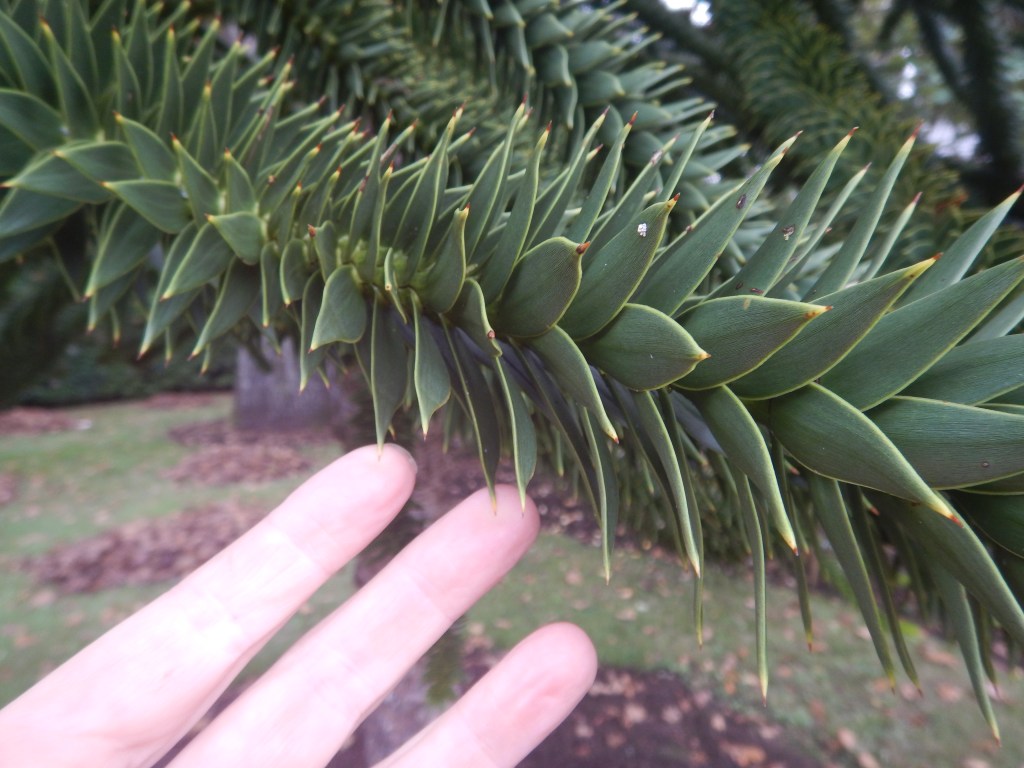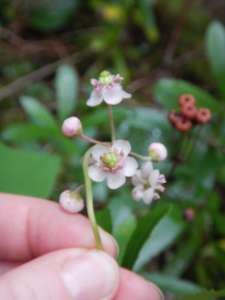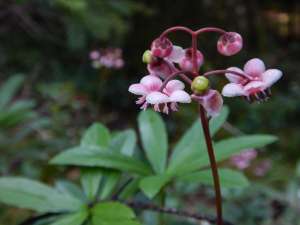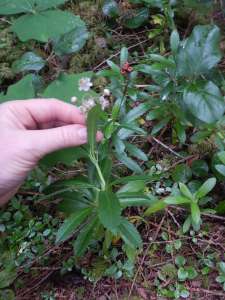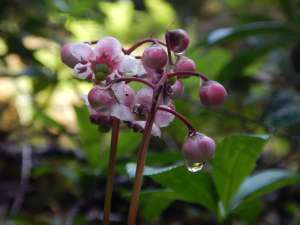Half a block along our street grows a tree I admire.
- It’s evergreen.
- It’s super tidy & symmetrical.
- And it’s just so FUNKY looking.
The Monkey Puzzle Tree, Araucaria araucana, is the national tree of Chile but seems to grow happily all along the coast of the Pacific Northwest.
That said, I reckon there’s no danger of it overwhelming the gardens hereabouts. That beautiful symmetry is created by triangular leaves spiralling around the branches and even along the trunk. The rigid leaf edges are sharp & the tips are severe needles.
It’s downright dangerous.
Even still, I NEEDED one in our garden.
No gardener of sound mind would position a Monkey Puzzle Tree near a high traffic area — nor underplant with high maintenance perennials.
Ever so carefully, I installed a Monkey Puzzle in an out-of-the-way section of our yard. I mulched from the trunk to the dripline. The very first season, a large buck attacked it with his antlers. I watched in amazement. I’ll bet the deer walked away with a migraine. The poor sapling survived with only 1 broken branch.
The Araucaria lasted maybe 3 or 4 years before it had sliced C one too many times.
He disappeared it. 😦
It hadn’t had the opportunity to grow to more than 3 feet.
So sad, but I understood.
The neighbour’s Araucaria was here when we arrived in the ‘hood. Over 15 years, it’s grown from a sturdy 6 ft. to an impressive 30 ft tall. (It takes patience to grow a Monkey Puzzle). They’ve limbed up the branches so whoever mows the lawn is much safer.
One day soon, I’m hoping it’ll be mature enough to produce cones. Can you imagine how pre-historic they’ll look, too?
I’ll happily admire it from afar.
-30-




